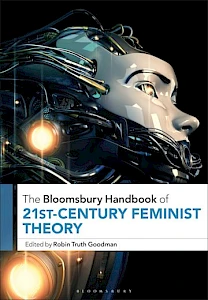The Bloomsbury Handbook of 21st-Century Feminist Theory
| Erscheinungsjahr: | 2019 |
| Herausgeber: | Robin Truth Goodman |
| Sprache: | Englisch |
| Verlag: | Bloomsbury Academic |
| Details: | Softcover, 17 x 25 cm, 528 Pages |
| ISBN: | 978-1350268401 |
| Werke: |
Das Bloomsbury Handbook of 21st-Century Feminist Theory ist der umfassendste verfügbare Überblick über den aktuellen Stand des zeitgenössischen feministischen Denkens.
In den Kapiteln, die von weltweit führenden Wissenschaftlerinnen und Wissenschaftlern aus verschiedenen Disziplinen verfasst wurden, werden die neuesten Überlegungen zu den wichtigsten Themen des aktuellen feministischen Diskurses untersucht, darunter:
- Feministische Subjektivität - von Identität, Differenz und Intersektionalität bis hin zu Affekt, Sex und dem Körper
- Feministische Texte - Schreiben, Lesen, Genre und Kritik
- Feminismus und die Welt - von Macht, Trauma und Wert bis hin zu Technologie, Migration und Gemeinschaft
Das Bloomsbury Handbook of 21st-Century Feminist Theory enthält Erkenntnisse aus den Literatur- und Kulturwissenschaften, der Philosophie, der Politikwissenschaft und der Soziologie. Es ist ein unverzichtbarer Überblick über das aktuelle feministische Denken und die zukünftigen Richtungen für Wissenschaft, Debatte und Aktivismus.
Effie Yiannopoulou, Kap. 30: Migration, S. 426-428:
"...Boukal, however, does more than expose the power dynamics-and indirectly engage the histories of cultural and social determination-thar control who can move and how. She brings into focus the relational character of mobilities in all their material manifestations. Countering dominant public discourses that stage migration as a threat inherently from the "outside," Boukal's work proposes a framework that identifies a relationship of interdependence connecting privileged and marginal mobilities. Encoded here through their representation as ruins, the synecdochic signs of migration encircle what is represented as a "fenced in" system of Western cultural and economic hegemony, rupturing its borders partly by means of resignifying its spaces. The same beaches that act as holiday resorts for the affluent Westerners are identified as sites of dispossession, death, and burial when their postcard-type photographs are strategically placed among the visual traces of missing migrant bodies. Migrant ruination is shown thus to haunt Europe with a vision of its own finitude and constructedness, suggesting that, as an idea and an institution, "it hasn't always been there" and "it will not always be there, it is finite" (Derrida 44). At once, it also confronts the West with the very precariousness that is lodged, even if foreclosed, at the heart of its self-perceprion and which migration itself embodies-roigrancy posited here, in all its unpredictability, as a constituent element in Western ontological structures and histories..."
| Download des zitierten Texts PDF, 5.9 MB |
